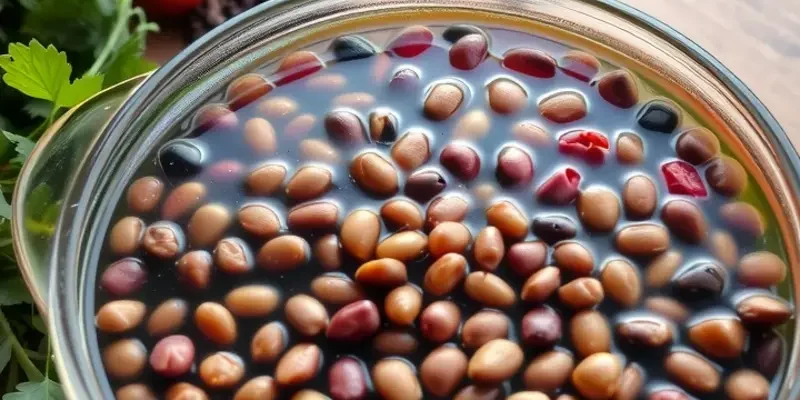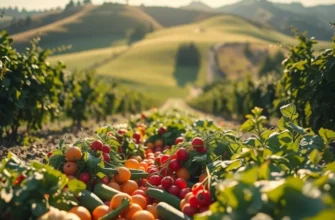Cooking beans can be challenging, especially if you want them perfectly tender without splitting. Whether you’re a novice or an experienced home cook, mastering the art of cooking beans can enhance your dishes and broaden your culinary skills. From soaking methods to cooking techniques, this guide offers practical tips to ensure your beans stay whole and delicious, ready to elevate any meal.
The Power of Soaking: Preparing Beans Right

To achieve perfectly cooked beans that maintain their shape and texture, soaking is an indispensable step. Beans are notorious for uneven cooking and splitting, which can affect both their appearance and texture. Thankfully, understanding the science behind soaking can help you avoid these common pitfalls and elevate your bean-cooking game.
Soaking beans before cooking serves multiple purposes. Primarily, it initiates the rehydration process, allowing beans to cook more evenly. This step helps break down some of the complex sugars responsible for bean-related digestive discomfort. By soaking beans, you not only enhance their culinary qualities but also improve digestibility, supporting a healthier diet.
Traditional Soak Method
The traditional soak method is a foolproof way to prepare beans for cooking. Start by rinsing your beans thoroughly under cold water, removing any debris or damaged beans. Place the cleaned beans in a large bowl and cover them with water, at least three times the volume of beans. Leave them to soak for 8-12 hours or overnight. This extended soak softens the bean’s outer shell, ensuring they cook thoroughly without splitting.
While the traditional method requires planning ahead, it pays dividends in terms of cooking time reduction and preservation of shape and texture. If you’re integrating beans into your meal planning, soaking them the night before can streamline your preparation process.
Quick Soak Method
For those who forget to soak their beans overnight, the quick soak method offers a convenient alternative. Begin by rinsing the beans, then transfer them to a pot filled with water, again covering the beans with several inches of liquid. Bring the pot to a boil and let it boil for about two minutes. After boiling, remove the pot from heat and let the beans soak covered for one hour. Drain the beans and rinse them under cool water before proceeding with your recipe.
While the quick soak method doesn’t soften beans quite as thoroughly as the traditional method, it’s effective when time is of the essence. By taking care of initial rehydration, you safeguard against the risk of splitting when beans are exposed to high heat during the main cooking process.
In both methods, it’s crucial to discard the soaking water and rinse the beans before cooking. This step eliminates any residual sugars and starches that could cause further splitting and enhances the beans’ overall flavor profile.
Soaking isn’t just an old wives’ tale—it’s a crucial culinary technique that transforms beans into a versatile, nutritious ingredient. Investing time in either soaking method ensures that you enjoy beans at their best, fostering a love for this pantry staple that fits any culinary tradition. By mastering the art of soaking, you’re one step closer to consistently perfect results, chapter over chapter.
Cooking Techniques for Perfect Beans

Cooking beans to perfection means more than just boiling them. Controlling heat is crucial to avoid splitting. Start with soaking. This step reduces cooking time and helps maintain the bean’s integrity. Use cool water and let your beans rest for at least 8 hours or overnight. Remember to discard the soaking water and rinse your beans. This ensures a clean slate for cooking.
The type of cookware makes a difference. Opt for a heavy-bottomed pot for even heat distribution. Heavy pots maintain a steady temperature, reducing the risk of fluctuating heats that can lead to sudden boils. A consistent simmer is the goal. Once your beans have reached a boil, immediately reduce the heat to a gentle simmer. Too rapid a boil weakens the beans’ skins, leading to splits.
Cooking time varies depending on bean type and age. Older beans may take longer, so it’s essential to check for doneness correctly. Avoid frequent stirring; it can break the beans. Instead, gently agitate the pot occasionally. Use a spoon to sample a few beans, ensuring they are tender yet intact.
Keep high-acid ingredients for later. Adding tomatoes, vinegar, or citrus too early can toughen beans and elongate cooking time. Stir these ingredients in once your beans are nearly tender.
The pinch test is an excellent method to check for doneness. Take a bean and press it between your fingers. It should mash without resistance but stay somewhat firm. If it’s still grainy in texture, it needs more time. Here’s a tip: add a teaspoon of salt halfway through cooking. This helps season the beans evenly, avoiding skin toughening that occurs if added too early.
While cooking, maintain a watchful eye. Even cooking requires periodic checks. If your beans have absorbed too much water, adding a small amount of boiling water helps. Avoid adding cold water, which lowers temperature and leads to uneven cooking.
For those interested in complementing your beans with minimal waste, explore practical ingredient batching techniques. Discover efficient ways to combine beans with other ingredients to maximize flavor without splitting them here.
Finally, patience is paramount. Rushing the cooking process often results in faulty beans. Allow them their time on the stove, with low, stable heat. This method leads to perfectly cooked beans, rich in flavor and full in form.
Final words
Cooking beans to perfection without splitting them is a skill that can greatly enhance your meals. By recognizing the importance of soaking and mastering various cooking techniques, you’ll achieve tender, flavorful beans every time. Remember to be patient and monitor your beans closely, adjusting heat and time as needed. With these practical tips, you’ll not only elevate your culinary skills but also enjoy the full benefits of cooking with beans—rich in nutrients, fiber, and endless possibilities. Happy cooking!







